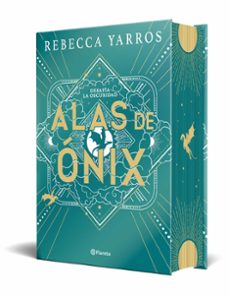Imprescindibles
Ficción
No Ficción
Ciencias y tecnología BiologíaCienciasCiencias naturalesDivulgación científicaInformáticaIngenieríaMatemáticasMedicinaSalud y dietas Filología BiblioteconomíaEstudios filológicosEstudios lingüísticosEstudios literariosHistoria y crítica de la Literatura
Humanidades Autoayuda y espiritualidadCiencias humanasDerechoEconomía y EmpresaPsicología y PedagogíaFilosofíaSociología Historia ArqueologíaBiografíasHistoria de EspañaHistoria UniversalHistoria por países
Infantil
Juvenil
Cómic y manga
Novela gráfica Novela gráfica americanaNovela gráfica europeaNovela gráfica de otros países Personajes, series y sagas Series y sagasStar Wars Superhéroes Cómics DCCómics MarvelCómics otros superhéroesCómics Valiant
eBooks
Literatura ContemporáneaNarrativa fantásticaNovela de ciencia ficciónNovela de terrorNovela históricaNovela negraNovela romántica y erótica Juvenil Más de 13 añosMás de 15 años Infantil eBooks infantiles
Humanidades Autoayuda y espiritualidadCiencias humanasEconomía y EmpresaPsicología y PedagogíaFilosofía Historia Historia de EspañaHistoria Universal Arte CineMúsicaHistoria del arte
Ciencia y tecnología Ciencias naturalesDivulgación científicaMedicinaSalud y dietas Filología Estudios lingüísticosEstudios literariosHistoria y crítica de la Literatura Estilo de vida CocinaGuías de viajeOcio y deportes
Ilona Katzew
Recibe novedades de ILONA KATZEW directamente en tu email
Filtros
Del 1 al 2 de 2
TURNER 9788475066387
La pintura de castas construye la identidad racial por medio de la representación visual. Es uno de los géneros pictóricos más fascinantes del periodo colonial en México particularmente, y del siglo XVIII en general. Ejecutadas a modo de series de imágenes consecutivas, las pinturas representan el complejo proceso de mestizaje entre los tres grupos principales que habitaban ese territorio español: indígenas, españoles y africanos. Aunque el interés por la clasificación de las razas puede rastrearse desde la Antigüedad clásica y durante la Edad Media, el tema estuvo en boga especialmente durante el siglo XVIII, cuando los estudiosos y la gente común buscaban explicarse por qué difería el color de la piel y el comportamiento de los individuos. Entre las cuestiones más ampliamente debatidas figuraba el intenso mestizaje que se producía en América. Tanto científicos como viajeros y funcionarios de la Corona, entre otros, avanzaron su hipótesis sobre la población híbrida del Nuevo Mundo. La pintura de castas constituye, pues, un indicio visual singular de esta constante fascinación por la genealogía de la humanidad.
Ver más
Tapa dura
STANFORD UNIVERSITY PRESS 9780804761413
This innovative and provocative volume focuses on the historical development of racial thinking and imagining in Mexico and the southwestern United States over a period of almost five centuries, from the earliest decades of Spanish colonial rule and the birth of a multiracial colonial population, to the present. The distinguished contributors to the volume bring into dialogue sophisticated new scholarship from an impressive range of disciplines, including social and cultural history, art history, legal studies, and performance art. The essays provide an engaging and original framework for understanding the development of racial thinking and classification in the region that was once New Spain and also shed new light on the history of the shifting ties between Mexico and the United States and the transnational condition of Latinos in the US today.
Ver más
Tapa blanda
Del 1 al 2 de 2



























